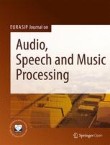Recognition of target domain Japanese speech using language model replacement
End-to-end (E2E) automatic speech recognition (ASR) models, which consist of deep learning models, are able to perform ASR tasks using a single neural network. These models should be trained using a large amou...
